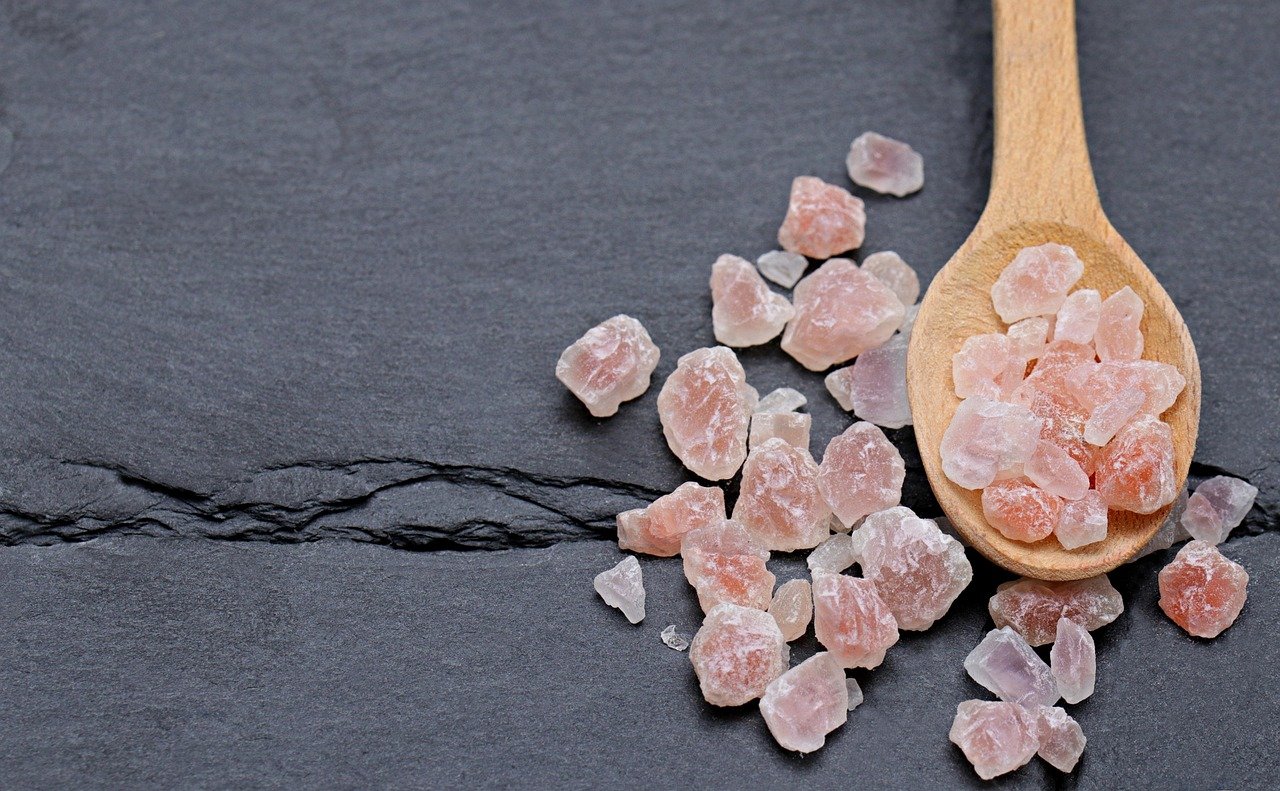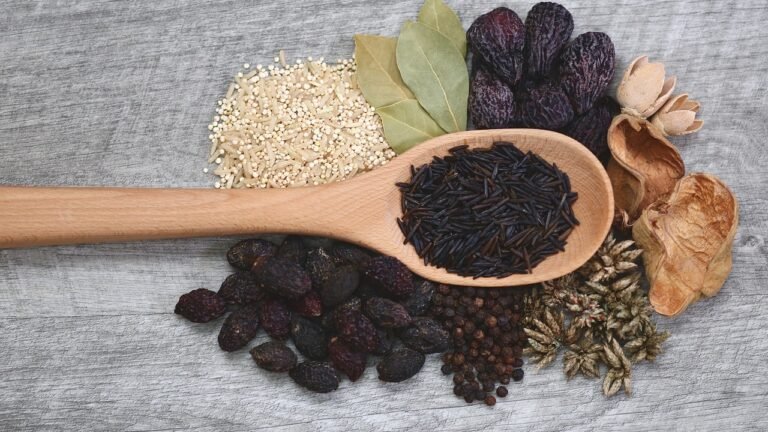Iodine Deficiency in India: How Pink Salt Popularity Is Causing a Health Comeback
Table of Contents
ToggleDiscover Iodine Deficiency In India
Discover the rising risks of iodine deficiency in India due to pink salt overuse. Learn how to protect your thyroid and hormone health without giving up natural salts.
If you’re like me, you probably made the switch to pink salt a few years ago. It felt fancy, mineral-rich, and cleaner than the regular white iodized salt we all grew up with. But then I started looking into iodine deficiency in India, and I had a wake-up call.
That pretty pink salt on my shelf? It didn’t have the one mineral my thyroid was silently begging for—iodine.
This blog shares the science, the history, and the surprising comeback of iodine deficiency in India—why it’s happening now, how it’s affecting hormone and mental health, and what you need to do today.
The rise of pink salt has sparked a quiet crisis of iodine deficiency in India. As more people ditch iodized salt, the risk of iodine deficiency in India grows—especially among women. Hormonal imbalance, fatigue, and goiter are early signs of iodine deficiency in India that are often missed.
Many are unaware that pink salt, black salt, and gourmet salts may worsen iodine deficiency in India unless fortified. The reason iodine deficiency in India is resurging lies in this nutrition trend.
If you’re using Himalayan salt, you might unknowingly contribute to iodine deficiency in India in your family. This blog helps you understand the truth behind iodine deficiency in India and how to balance modern choices with ancient wisdom.
With thyroid disease on the rise, iodine deficiency in India must be addressed immediately.
Why Iodine Deficiency in India Matters (More Than You Think)
Iodine is a trace mineral, but your body can’t make or store it—meaning you need it daily. It powers your thyroid gland, which controls metabolism, energy, weight, and even brain function.
Without enough iodine, the consequences are serious:
Goiter (enlarged thyroid)
Hypothyroidism (slow metabolism, weight gain, fatigue)
Depression, brain fog, and memory loss
Irregular menstrual cycles and fertility issues
Developmental delays in children and unborn babies
Iodine Deficiency in India: Then vs Now
Before Iodized Salt
In the 1950s–80s, iodine deficiency affected 1 in 4 people in some regions
Himalayan and rural belts had high goiter rates
Thousands of miscarriages and cognitive delays linked to deficiency
The Tata Salt Revolution (1983 Onward)
Tata Salt became India’s first branded iodized salt, delivering consistent, affordable iodine to millions.
It wasn’t just about taste—it was public health in action.
Government campaigns promoted iodized salt for all
Iodine levels in households improved nationwide
By 2018–19, 76.3% of homes were using adequately iodized salt (≥15 ppm)
The Pink Salt Trend—and the Fall of Iodine
Over the last decade, pink salt became a wellness must-have. But here’s the hard truth:
Himalayan pink salt has almost zero iodine
Most pink/rock salts in India are non-iodized unless labeled otherwise
Urban wellness circles are unknowingly switching to non-iodized diets
The result? A rising tide of unrecognized iodine deficiency in India.
In recent years, pink salt became the wellness world’s darling. It’s natural, mineral-rich, and unrefined. But there’s one thing it’s missing: iodine.
The Issue:
Himalayan pink salt contains 84 trace minerals, but barely any iodine.
Most pink salts sold in India are non-iodized unless fortified (and most are not).
Switching fully from iodized salt to pink salt could unknowingly create deficiency over time.
Even worse? People are making the switch without knowing the consequences—especially in urban homes, wellness circles, and among the educated middle class.
Real-Life Signs of Iodine Deficiency in India
Most people don’t realize they’re deficient until symptoms show up:
| Symptom | Why It Happens |
|---|---|
| Constant fatigue | Slowed metabolism from low thyroid hormones |
| Weight gain | Underactive thyroid due to iodine shortage |
| Brain fog | Iodine supports mental clarity + brain function |
| Hair loss | Thyroid imbalance causes thinning |
| Irregular periods | Hormonal imbalance triggered by thyroid stress |
| Developmental delays in children | Lack of iodine in pregnant mothers |
Is Pink Salt Bad? Not Really… But Here’s the Truth
| Salt Type | Iodine Content | Health Note |
|---|---|---|
| Iodized Salt | 15–50 ppm | Best source for thyroid health |
| Pink Salt | < 2 ppm | Has minerals but almost no iodine |
| Rock Salt (Sendha Namak) | 0 ppm | Cooling in Ayurveda but iodine-free |
| Kala Namak | 0 ppm | Great for digestion, not for thyroid |
Why Women Are More at Risk
Women need more iodine due to hormone cycling
Thyroid conditions are more common in women (5–8x more)
Pregnancy increases iodine need by 50%
PMS, PCOS, infertility, and low energy can worsen without it
Iodine & Mental Health
Did you know iodine is crucial for brain development? Especially in:
Children under 5
Pregnant and lactating women
Teens during brain formation years
India’s national learning deficit could be connected to low-iodine diets in vulnerable states.
What You Can Do Now (Simple Fixes)
✅ 1. Use Iodized Salt for Daily Cooking
Your rice, dal, sabzi, and roti dough—use regular iodized salt here.
✅ 2. Save Pink Salt for Garnishes
Sprinkle it on salads or use it in fasting recipes, but don’t make it your base salt.
✅ 3. Check Salt Labels
If it doesn’t say “iodized” or “fortified,” it probably isn’t.
✅ 4. Support Iodine Through Diet
Foods like fish, dairy, and seaweed have some iodine—but in India, salt is still the #1 source.
Ayurvedic Insight: Salt Is Rasa, Not Enemy
Ayurveda sees salt as Lavana Rasa—a grounding taste that balances digestion, hydration, and Vata dosha.
| Salt | Energetics | Use Case |
|---|---|---|
| Sendha Namak | Cooling | Best for Pitta |
| Kala Namak | Heating + detoxing | Good for Kapha |
| Samudra Lavana (sea salt) | Moistening | Balances Vata dryness |
But Ayurveda also says modern balance matters.
So while we use rock salt for fasting, we must include iodized salt for essential mineral needs in today’s environment.
Final Thoughts Of Iodine Deficiency In India
Iodine deficiency remains a significant public health concern in India, impacting millions of individuals, particularly in rural areas. Despite the widespread availability of iodized salt, the problem persists due to factors like limited access to iodine-rich foods and environmental influences. However, the good news is that iodine deficiency is preventable.
By incorporating iodine-rich foods such as seafood, dairy products, and iodized salt into your daily diet, you can protect yourself from the harmful effects of iodine deficiency. It’s important to be mindful of your iodine intake and, if necessary, consult with a healthcare provider regarding supplements, especially if you live in areas where iodine deficiency is more common.
Remember, iodine plays a crucial role in thyroid function, and maintaining the right balance is essential for overall health. Whether through dietary sources or supplements, taking the necessary steps to address iodine deficiency can lead to improved energy levels, cognitive function, and overall well-being.
Stay informed, and ensure you’re taking proactive steps to maintain a healthy iodine level in your body. It’s a small but powerful step towards a healthier future.
You may also love this Mint Chicken Recipe – High Protein, IBS-Friendly Indian Meal for Weight Loss
Tech Note
This post was created on WhiteBalanceAI.com, my blog platform where I build high-traffic, high-conversion blogs using SEO and storytelling. Want to grow yours too? Let’s talk.
FAQs: Iodine Deficiency in India
Q1. What is iodine deficiency?
Iodine deficiency occurs when there is not enough iodine in the diet, which is essential for the production of thyroid hormones. This can lead to various health issues, including goiter and developmental problems.
Q2. Why is iodine deficiency a problem in India?
Iodine deficiency is a significant public health issue in India due to the lack of iodine in soil and limited access to iodine-rich foods. Despite efforts like iodized salt, deficiency remains prevalent in many regions.
Q3. What are the symptoms of iodine deficiency?
Common symptoms include swelling in the neck (goiter), fatigue, weight gain, and developmental delays in children. Severe deficiency can lead to hypothyroidism and cognitive impairment.
Q4. How can iodine deficiency be prevented?
The most effective way to prevent iodine deficiency is through the consumption of iodized salt. Including iodine-rich foods like seafood, dairy, and seaweed can also help prevent deficiency.
Q5. Can iodine supplements help with iodine deficiency?
Yes, iodine supplements can help treat iodine deficiency, but they should be taken under the guidance of a healthcare provider. It's important not to overconsume iodine, as excessive intake can lead to thyroid problems.







